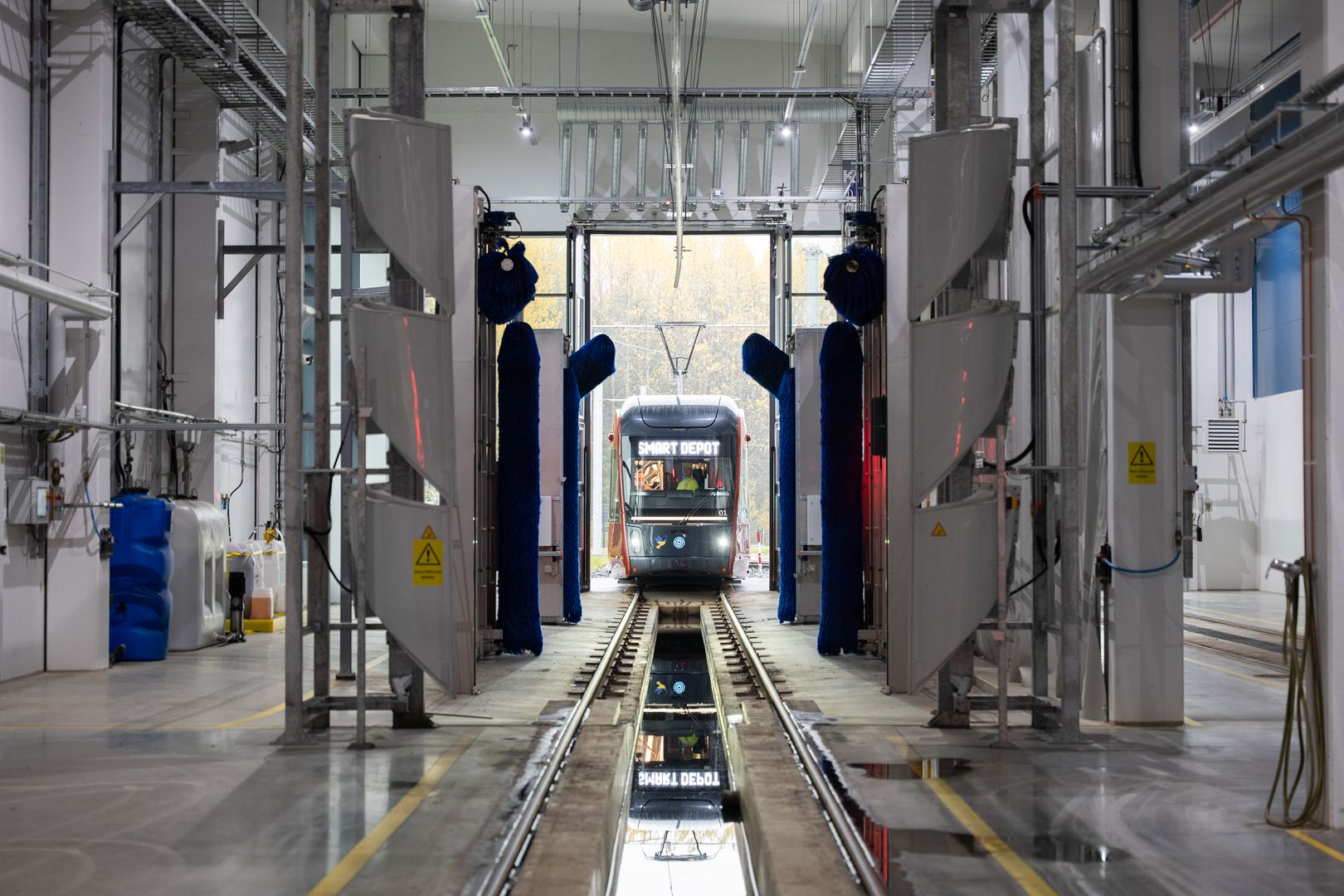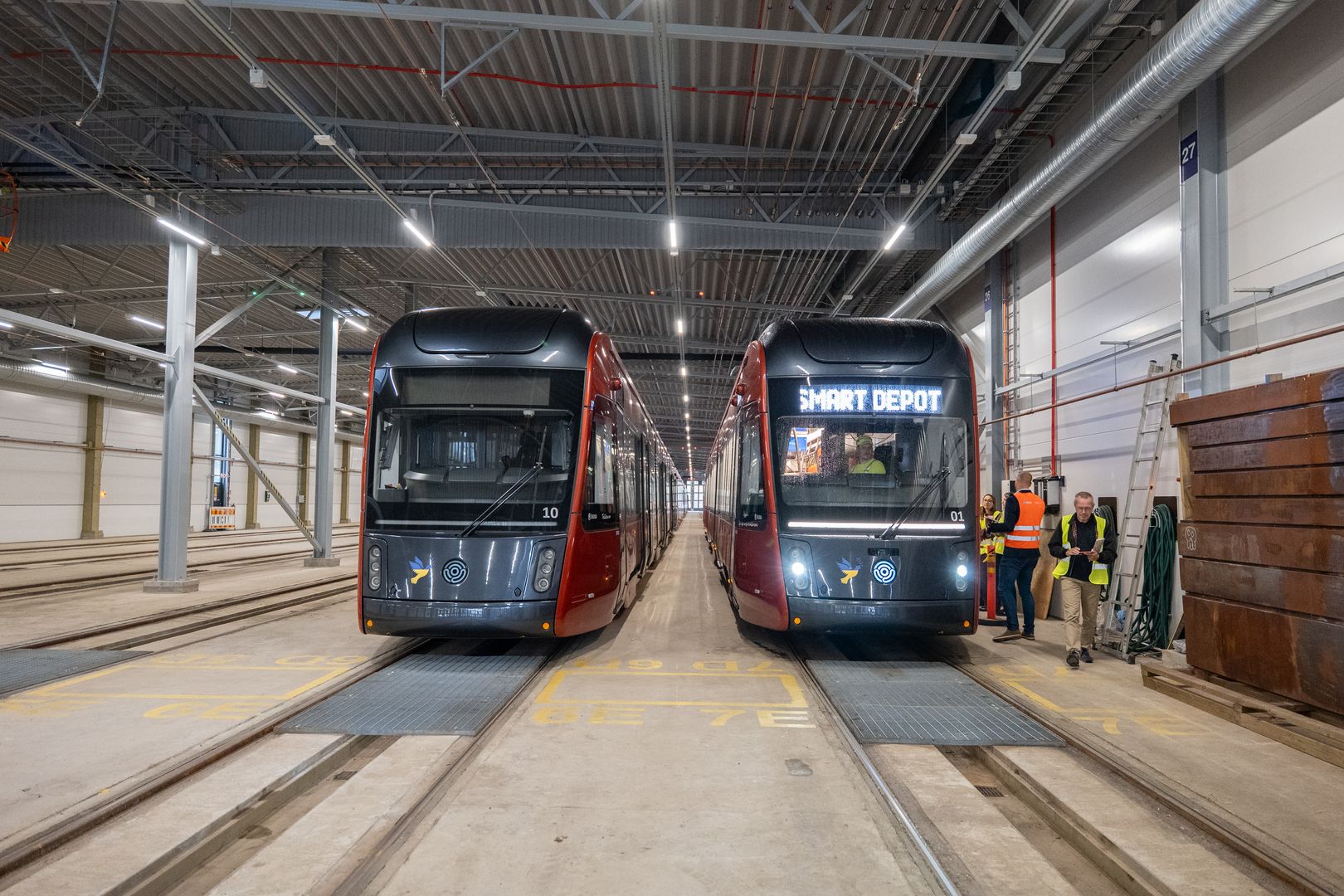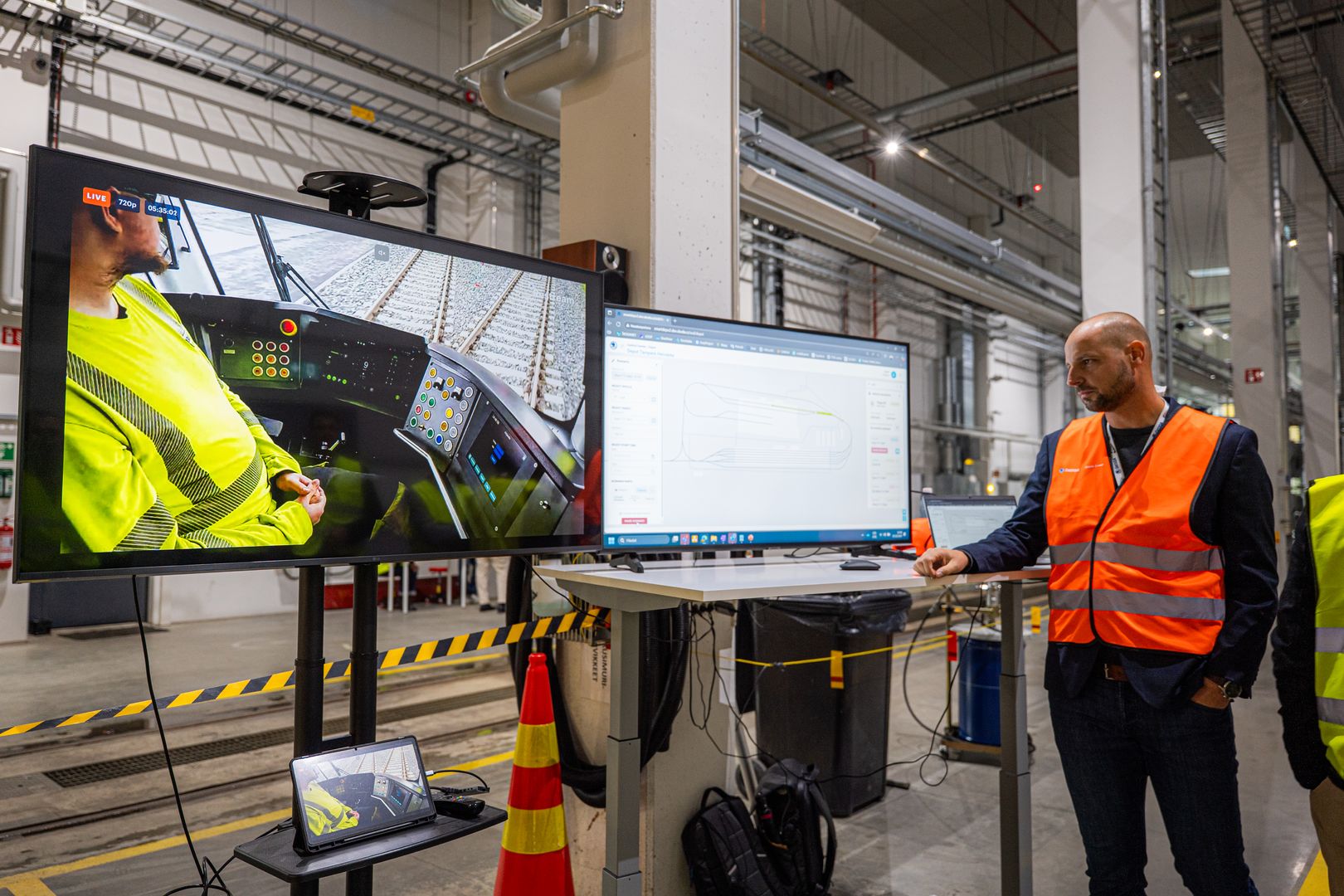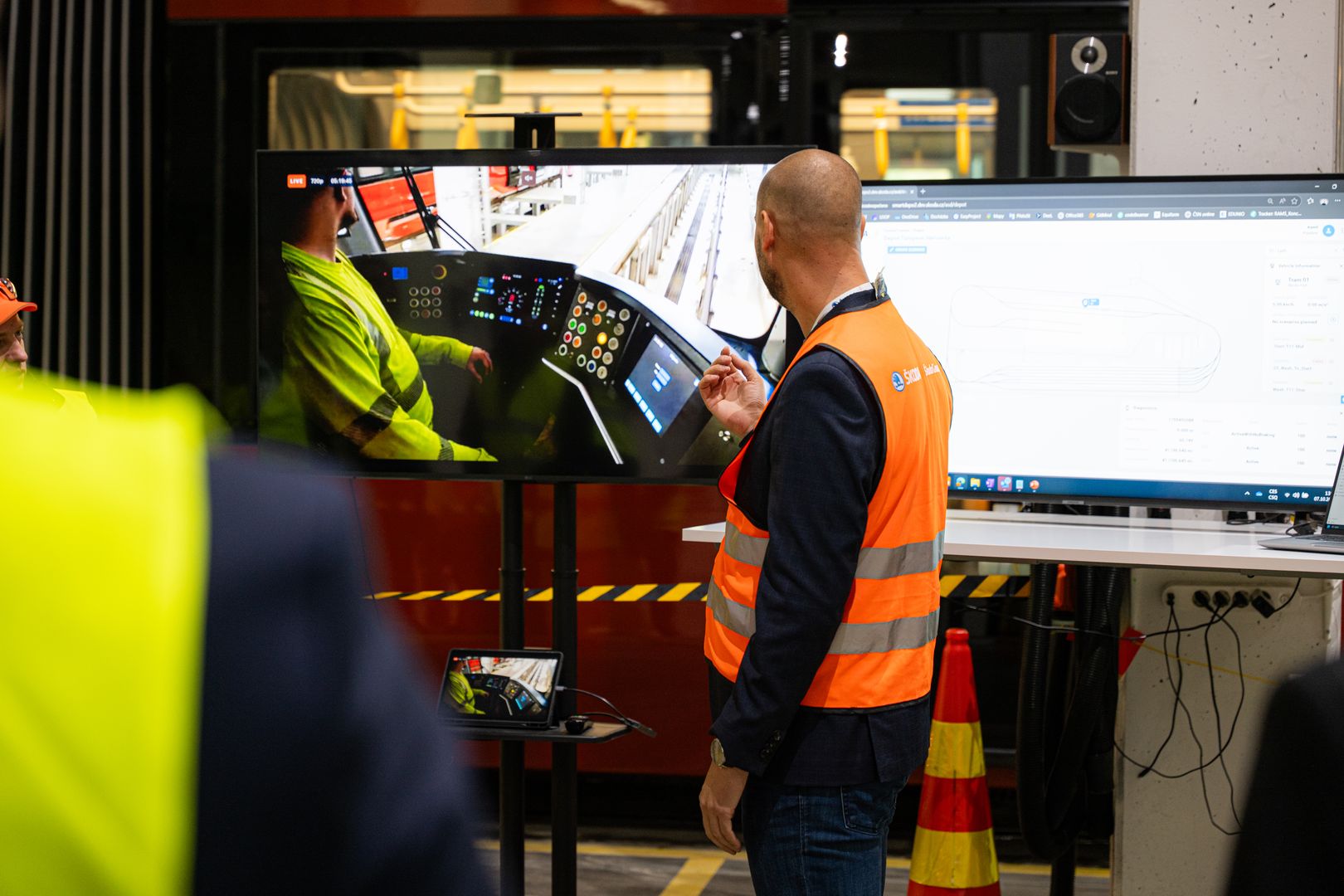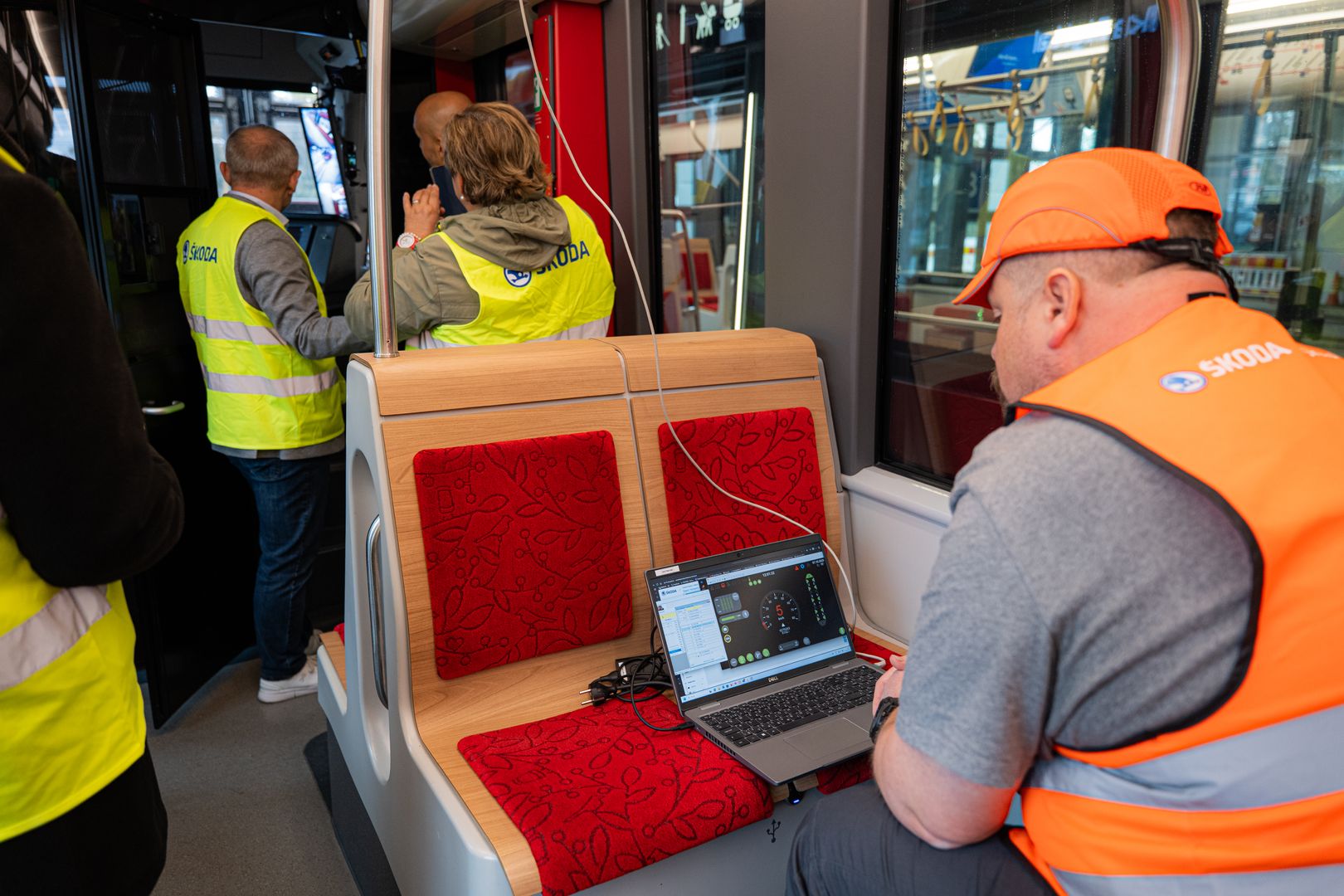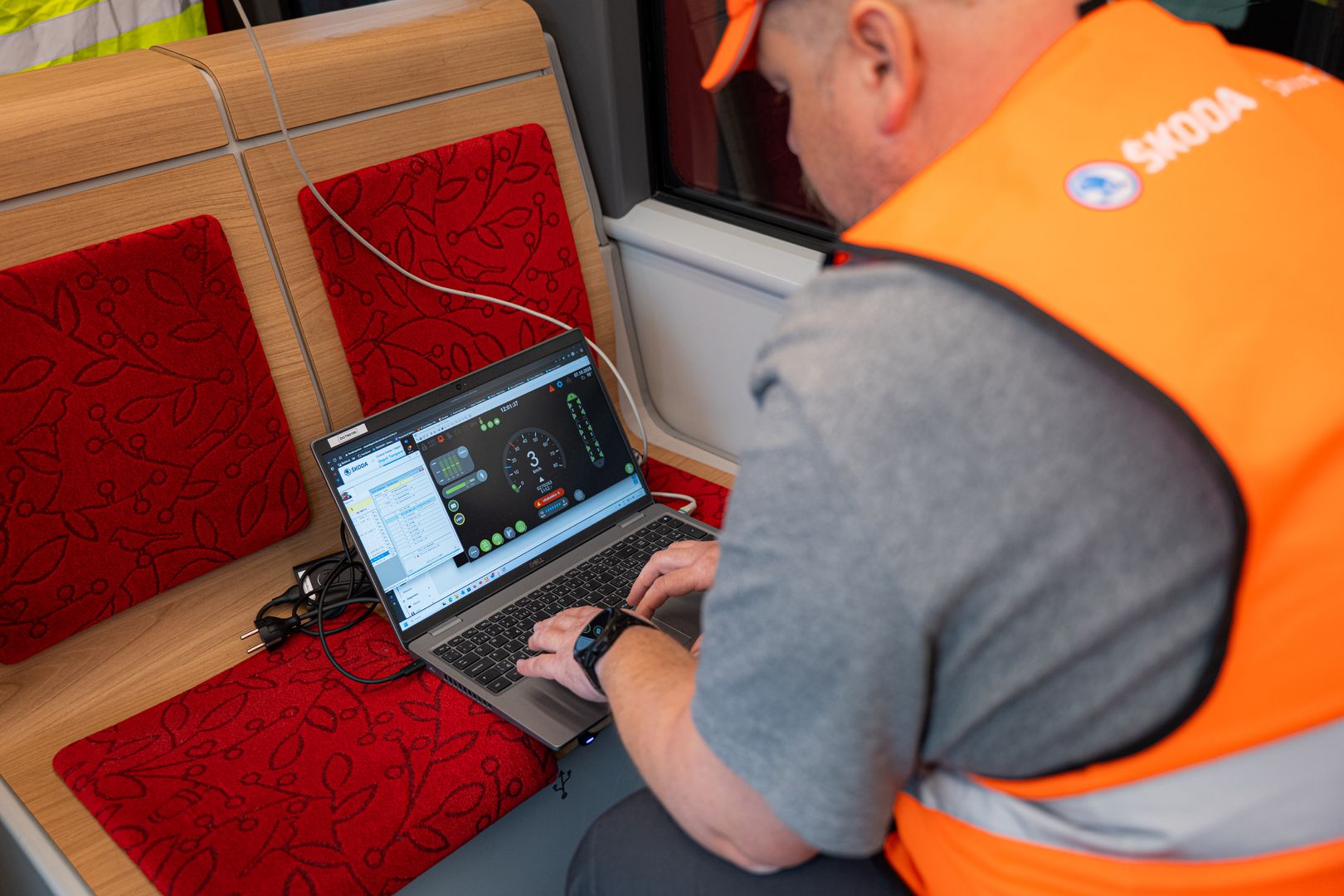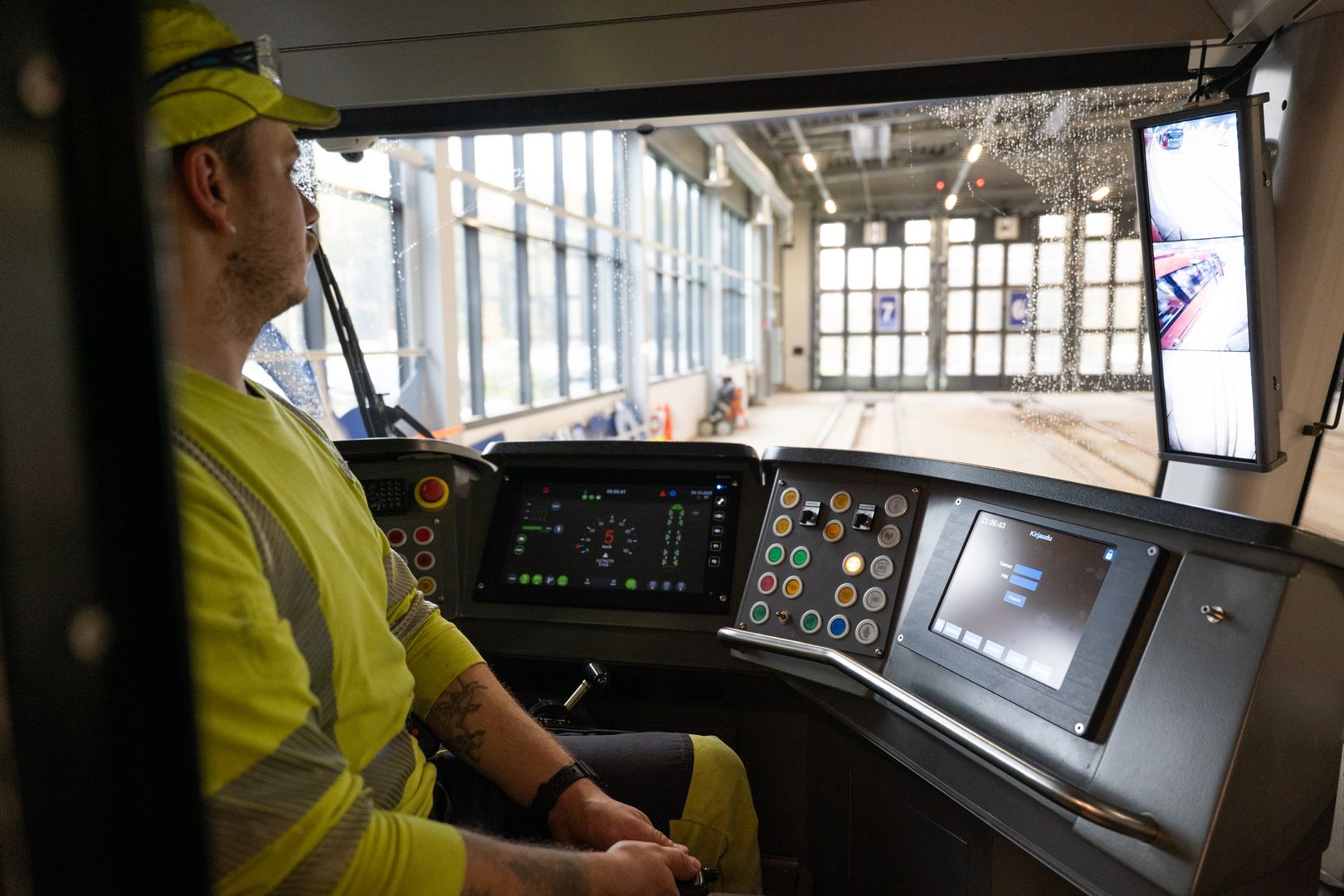“Smart Depot builds on our proven rail vehicle systems and transfers them into the depot environment. It interconnects all key processes – from the moment a vehicle enters the depot to its dispatch back into service. Our aim is to increase maintenance efficiency, relieve staff of routine tasks and give operators accurate data for decision-making. It is a tangible step towards a fully digital and autonomous operation,” said Jiří Liberda, Digital Managing Director at Škoda Group.
Automated depot — from shunting to visual inspection
The Smart Depot system enables fully automated tram movements within the depot — from parking and washing to transfers to maintenance tracks. Thanks to a high degree of integration, the control of all activities is fully centralised.
Key system functions include:
- Autonomous shunting and parking – trams move within the depot without a driver, precisely according to predefined scenarios; the core of this functionality is Škoda’s ACS anti-collision system
- AI visual inspection – automatic inspection of bogies, roofs and bodywork with detection of damage and contamination
- Digital twin and predictive diagnostics – continuous condition monitoring and predictive maintenance
- Fleet Management & Depot Management System – a unified data platform linking vehicles, infrastructure and service processes
Pilot operation in Tampere
Smart Depot is currently in a pilot phase in live operation. Škoda Group is progressively expanding its functionality to offer customers a complete solution — from architectural design and integration with local infrastructure and vehicles, to staff training and long-term operational support.
“In Tampere we have ideal conditions — a functioning tram system, an openness to innovation and partners who share our vision of autonomous mobility. Our technology is now maturing to a stage where it is ready for wide commercial deployment. The average return on investment is around four years depending on the project, while the AI visual inspection system typically pays back in about 1.5 years,” added Jiří Liberda.
The project is implemented in cooperation with the City of Tampere, Tampere University and GIM Robotics, and is partly funded through the OptiPEx programme in partnership with the Technical Research Centre VTT.
Lyyli Living Lab — an incubator for the future
Škoda Group has been working with the Tampere tram operator Tampereen Ratikka on the development and testing of digital technologies since 2021. For this purpose, Lyyli Living Lab was created in cooperation with other organisations — a development and testing environment for intelligent urban mobility. A key role is played by the Lyyli tram (one of the Škoda Smart Artic X34 vehicles), which serves as a mobile test platform for installing new systems and obtaining immediate feedback from real operation.
Škoda Group at the backbone of Tampere’s public transport
The city of Tampere operates one of the youngest tram networks in Europe — services have been running since 2021 and from the very beginning they have been provided exclusively by three-section Škoda Smart Artic X34 trams. To date, a total of 35 vehicles have been delivered or ordered. In addition, Tampereen Raitiotie Oy has ordered additional modules to extend 19 of these trams by 10 metres, increasing passenger capacity by roughly 30% by mid-2028.
